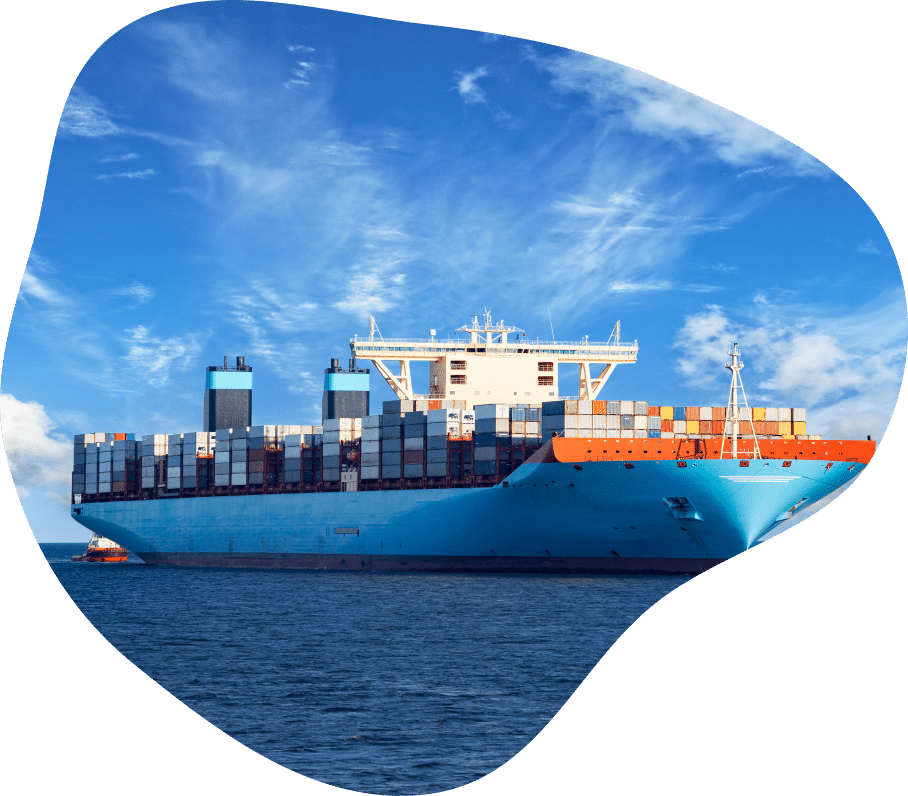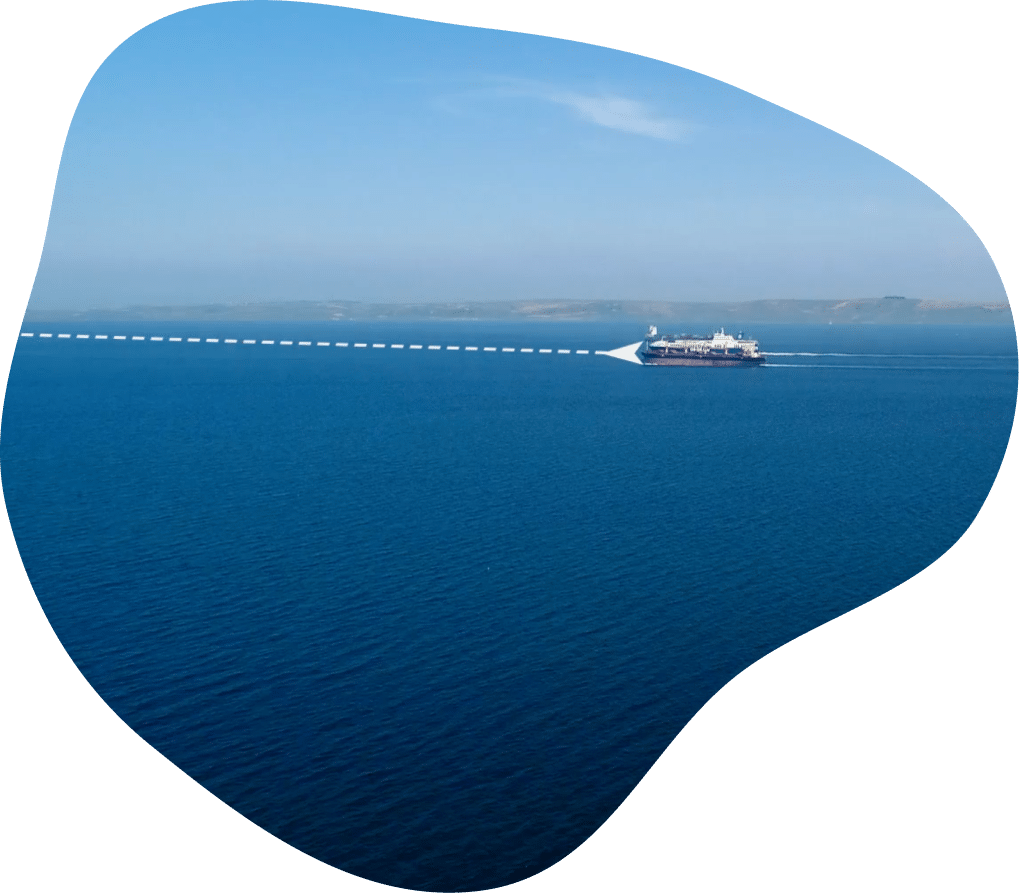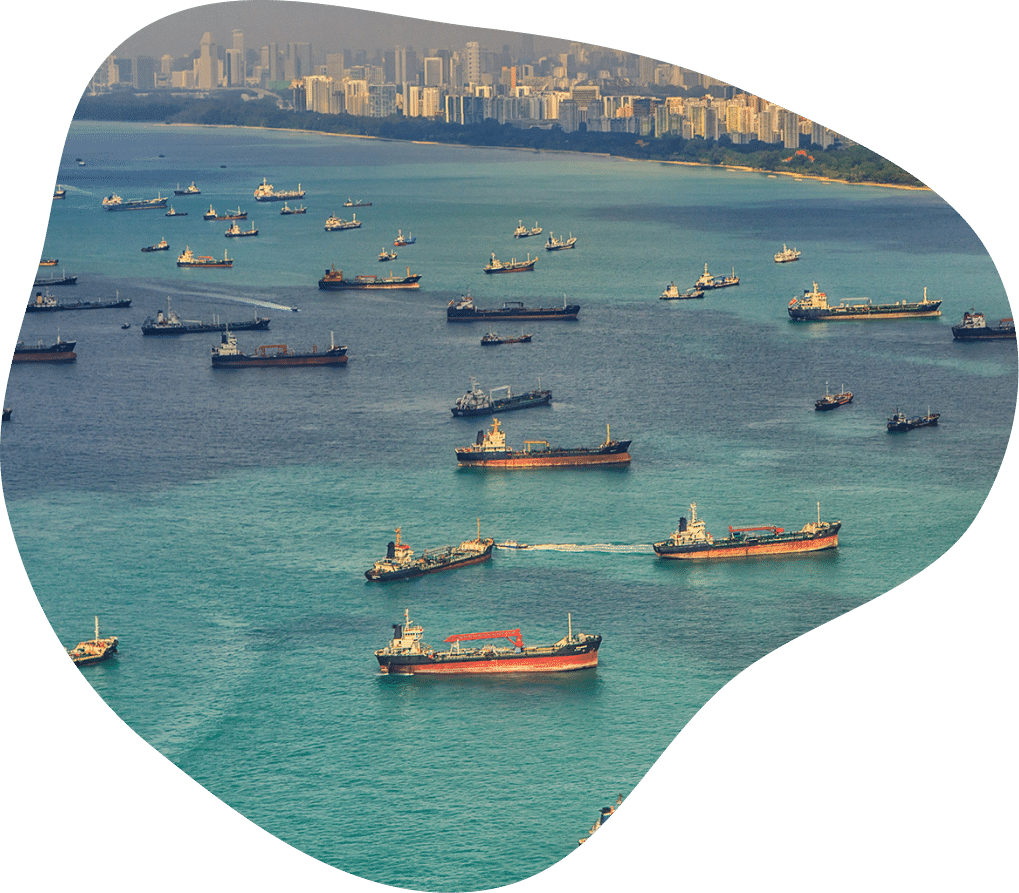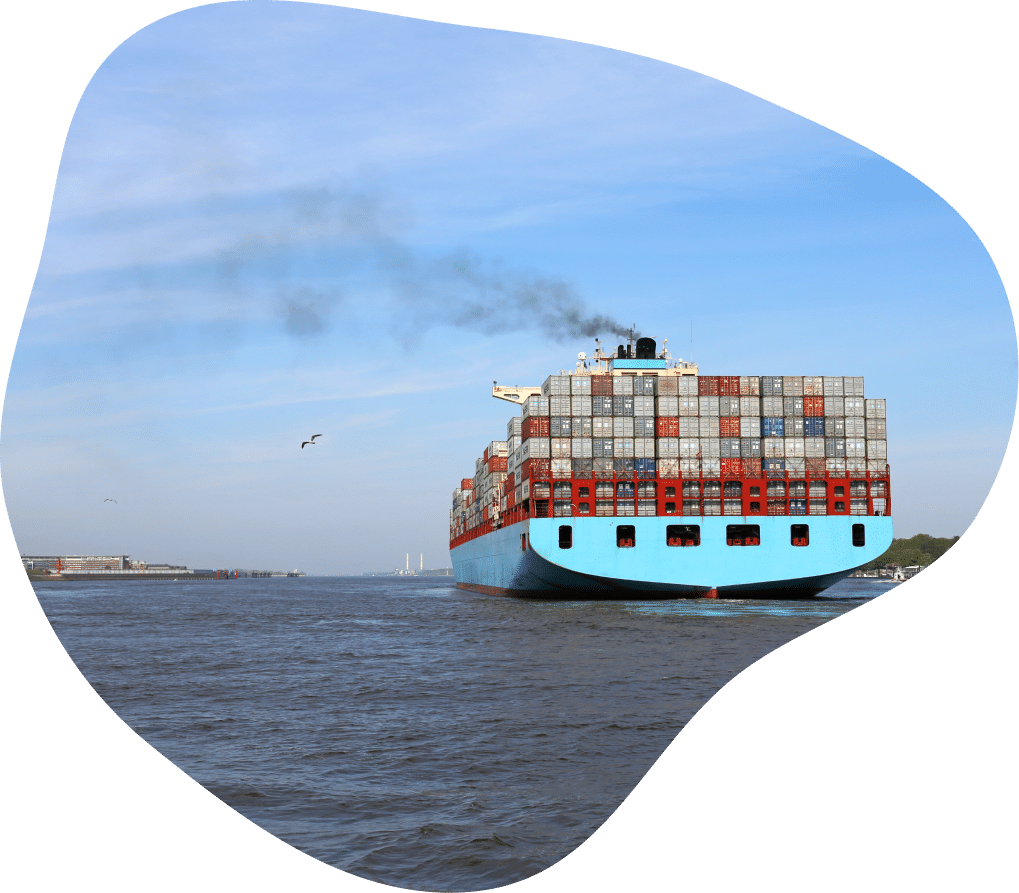Shipping
Challenges in route optimization,
predicting reliable arrival times
and achieving fuel efficiency
Planning the best route for your vessels to save time, money and fuel provides many benefits; but how can this be achieved?
The shipping industry is facing many challenges.
There is a global shortage of shipping containers, seaports are increasingly congested and there are cargo capacity constraints on vessels. Furthermore, there are a wide range of inefficiencies and a sub-optimal utilization of resources within the maritime industry; examples include a wasteful fuel consumption and the sub-optimal use of vessels.
Within the shipping and maritime sector, there is a limited use of real-time data and technology to predict arrival times and plan operations, unlike the aviation sector where it is standard. Companies therefore must estimate the arrival time of a ship without access to reliable sources of data. In addition, they do not know what the conditions will be in the ports, or even if there will be any potential issues with the cargo.
Today, transit time reliability is critical and a key measurement of operational performance. A typical voyage by a vessel carrying containers departs from China heading to mainland Europe, necessitating several stops in ports along the way. Weather conditions, port congestion and the need to conserve fuel are all variables.

Using data to help ships navigate vessel routes efficiently
We provide real-time data solutions to your company to optimize the route of your vessels, accurately predict arrival times and reduce fuel consumption.
What we do
Sinay provides solutions to the issues facing shipping companies. We supply digital tools harnessing data that helps the maritime sector handle the multiple challenges it faces and provide strategic guidance in our tailored workshop program.
Our approach
Sinay will work with you to tackle the issues you are facing, focusing on the challenge and proposing solutions that work for your business. Our goal is to help you through your digitalization journey providing you with the tools to do the job.
Working with your key stakeholders to understand the issues and design the solutions, we will design an operational plan tailored to your requirements, including a mock design of the digital dashboard interface. At the conclusion of the workshops, each client will have a clear roadmap to achieve their business objectives.
The Sinay Hub
What is the Sinay Hub?
The Sinay Hub is a single digital place to leverage data and deliver actionable insights and indicators. The Sinay Hub collects, aggregates & analyzes meaningful data through tailored modules. Using machine learning and AI algorithms Sinay has created software tools to help the maritime sector to digitalize and improve operational efficiency.
The Logistics Modules
There are various Logistics Modules available, including:
- Estimated Time of Arrival
- Route Planning
- Consumption Prediction

Estimated Time of Arrival module
Effective route optimization allows a company to accurately predict the arrival time of a vessel in the destination port, saving time, fuel and money – and reducing pollution.
Whilst shipping companies can project their vessel’s Estimated Time of Arrival (ETA) perhaps with a window of one week for arrival, forward planning is a major challenge. The lack of real-time data and information relating to the conditions in the ports creates unnecessary inefficiencies in the management of cargo, the port workforce and other logistical/ operational challenges.
The Estimated Time of Arrival (ETA) module employs historical data from AIS equipment. This allows ports and shipping managers to plan vessel routes and calculate accurate times of arrival, using real-time, historical and meteorological data from satellites and global positioning systems. This helps to avoid congestion, reduce fuel consumption and CO2 levels – improving sustainability whilst minimizing costs.
The major issues facing shipping today
Sinay is passionate about the ocean, and the issues and challenges facing the maritime sector. We believe that by using data and digital tools we can help the industry to improve business efficiencies and achieve environmental objectives including decarbonization.
Port Congestion
Ports are getting busier. New trade routes are opening globally, with emerging economies in Asia driving significant growth. Ships are getting bigger, for example with the development of mega-ships to achieve economies of scale and reduced fuel costs. The capacity of vessels is growing too with many doubling in volume to meet increasing demands for containers. However, plans for port extensions are yet to materialize to sufficiently meet this current and projected growth.
The impact on ports is clear. The volume of cargo offloaded by larger vessels at ports is rising and taking longer. Consequently, ships face longer dwell times. Vessels may arrive in port at their scheduled arrival time but could be forced to wait for berth space or encounter delays in offloading. This impacts on a ports’ operations and their scheduling reliability.
See also our article : Port Congestion in Asia


Achieving efficiency in shipping speeds and fuel consumption
Adjusting and planning for optimal vessel speed is crucial to achieve maximum fuel efficiency. The maritime sector relies heavily on the use of oil for vessels. With volatility in the international energy markets potentially increasing pressure on costs, this is an additional factor to consider.
To conserve fuel, shipping vessels will maintain slow steaming during a voyage; research indicates that a 10% reduction in speed reduces fuel consumption by 20%[1]. Whilst this is advantageous for saving fuel, conversely vessels often need to increase speeds to reach ports within their scheduled arrival time – resulting in significantly increased consumption. Higher speeds similarly create more pollutants in the water.
Weather of course is a further consideration. Harsh weather such as storms and strong undercurrents can require vessels to increase speeds, then reduce when conditions are more favorable. These circumstances may require vessels to adjust their routes or shelter in a neighboring port for the safety of their crew and to protect cargo; creating delays and adding pressure to increase speed to reach a destination.
[1] https://glomeep.imo.org/technology/speed-management/
The price of containers is rising
Over the past year, the price of containers has increased significantly. The COVID-19 pandemic has massively disrupted consumer spending habits, as people across the world are travelling less but spending more time at home – and consuming more goods, transported via container cargo.
This explosion in demand for containers is encouraging global businesses to seek competitive advantages, working in partnership with the shipping industry to achieve sustainability in transportation and reduced carbon emissions.
Reducing carbon emissions from shipping
In 2020 the United Nations’ International Maritime Organization (IMO) set targets for a 40% reduction in the carbon intensity of international shipping by 2030, compared with 2008 levels[1]. Regulations to improve vessel design to achieve greater energy efficiency are a reality.
Many shipping lines are committed to achieving zero carbon emissions on the high seas by 2030, in another step by the maritime sector to reduce CO2. Optimizing the speed of vessels efficiently and by maximizing container capacities are keyways to do this.
[1] https://www.reuters.com/article/us-shipping-environment-imo/un-approves-extra-steps-to-curb-shipping-emissions-idUKKBN27X2JC



